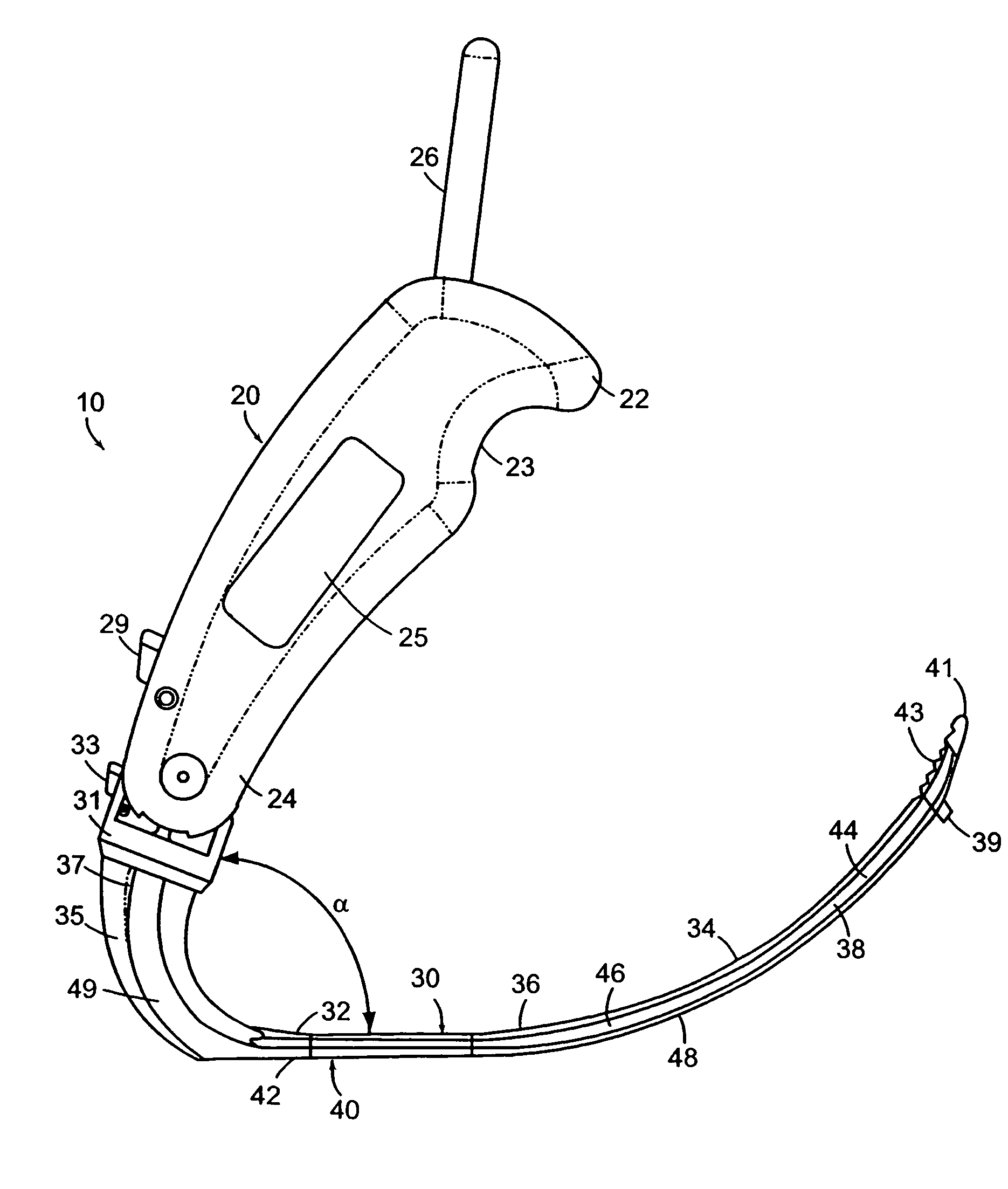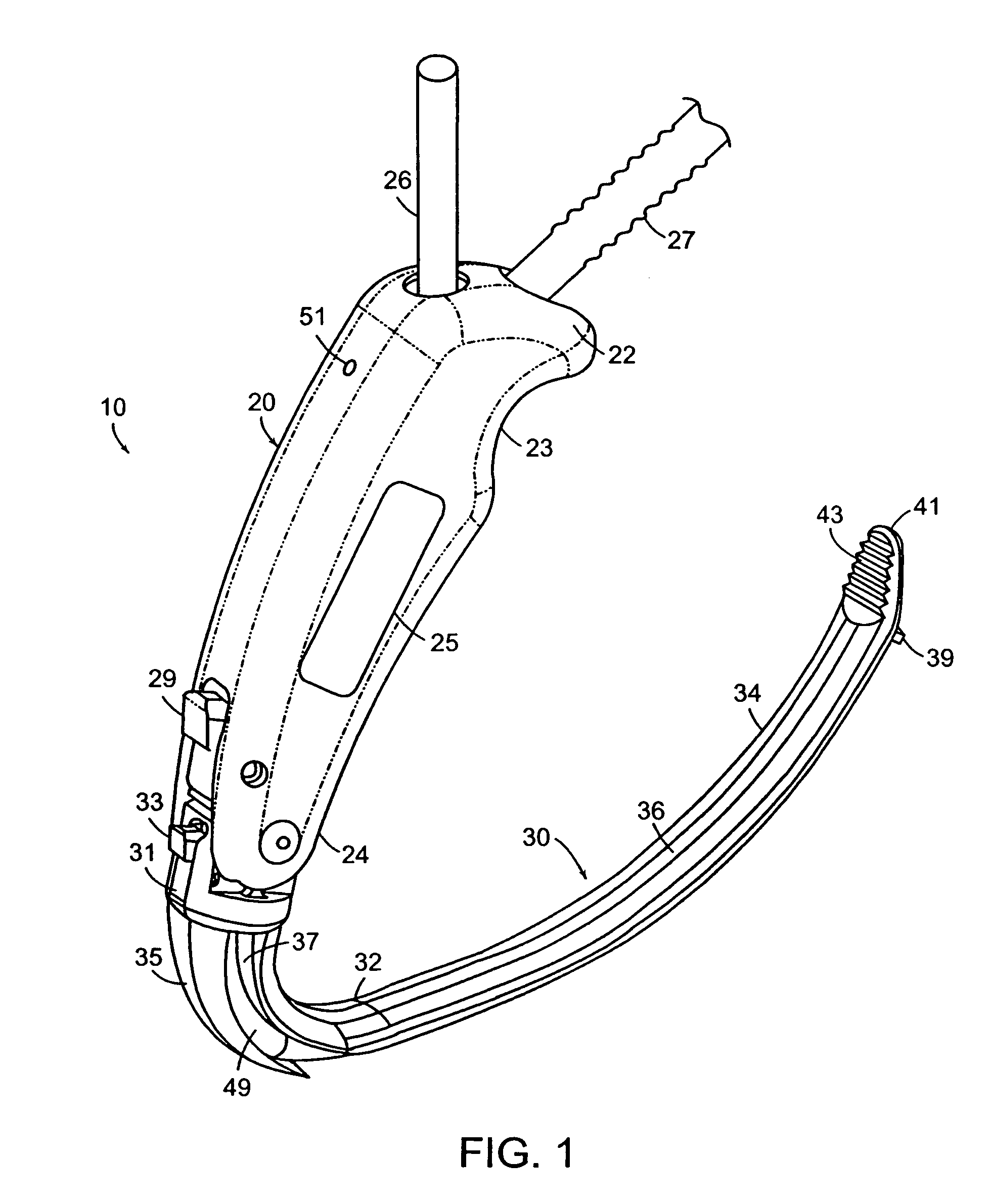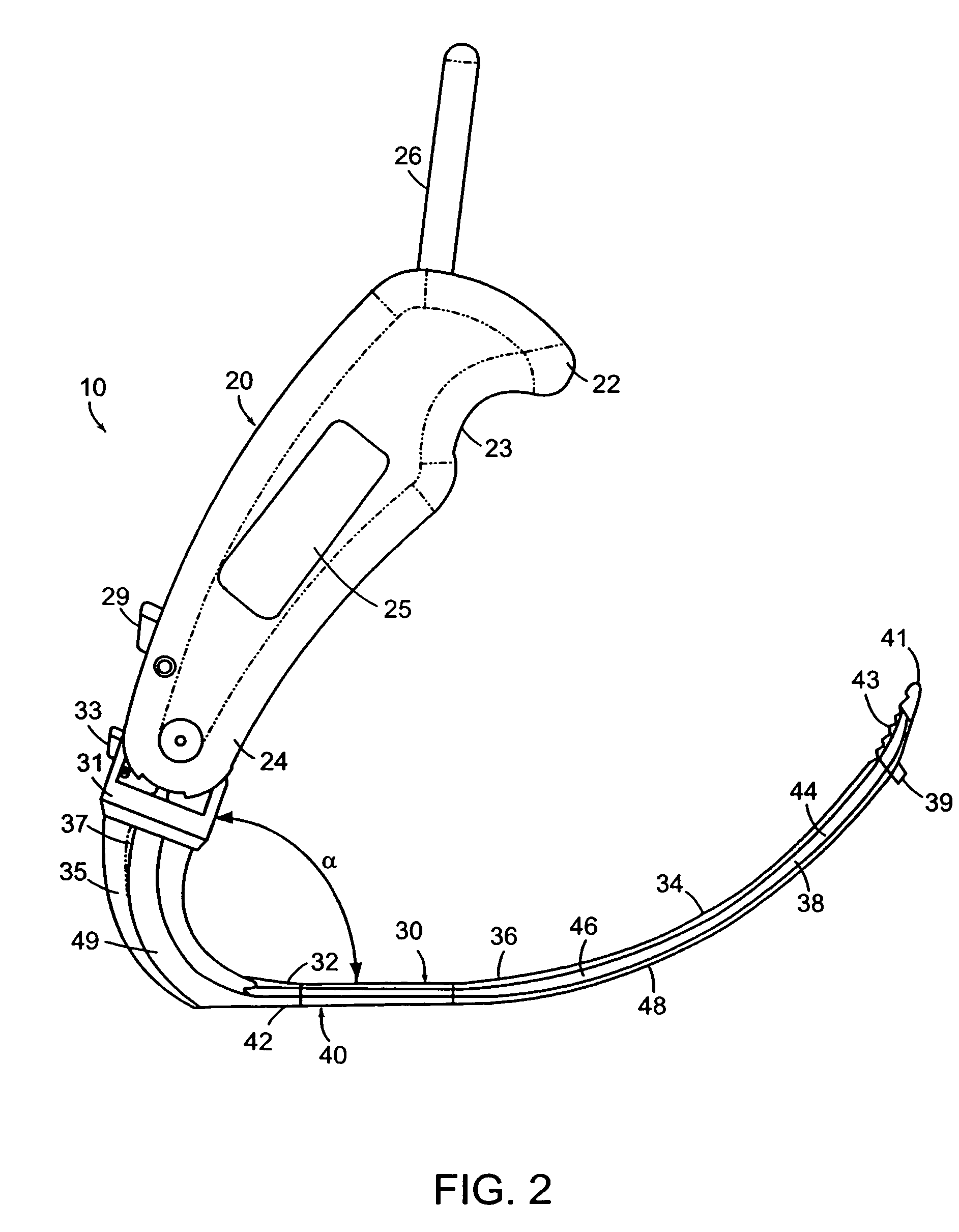Illuminated retractor for use in connection with harvesting a blood vessel from the arm
a retractor and arm technology, applied in the field of medical devices, can solve the problems of inhibiting the ability of life-sustaining blood supply to the patient's heart, coronary bypass surgery is not warranted, and coronary bypass surgery is required, so as to facilitate safe, reliable and expeditious harvesting of the vessel
- Summary
- Abstract
- Description
- Claims
- Application Information
AI Technical Summary
Benefits of technology
Problems solved by technology
Method used
Image
Examples
Embodiment Construction
[0070]The present invention provides an illuminated retractor for assisting in accessing, defining and illuminating the subcutaneous space within a patient's arm in which a blood vessel (e.g., the radial artery, the basilic vein) is located, thus allowing for improved visualization of this space, and, in turn, facilitating a procedure wherein the vessel is harvested.
[0071]As shown in the drawings, the present invention provides an illuminated surgical retractor 10 having a handle member 20, a first elongate section 30, a second elongate section 40, and a twist connector 31.
[0072]The handle member 20 is an elongate and generally cylindrical member that has a first top handle member end portion 22 and a second bottom handle member end portion 24. The second handle member end portion 24 of the handle member 20 is connected to the first elongate section 30 of the retractor 10 at the shaft portion 35 distal to the distal end portion 32 of the first elongate section 30. This connection is...
PUM
 Login to View More
Login to View More Abstract
Description
Claims
Application Information
 Login to View More
Login to View More - R&D
- Intellectual Property
- Life Sciences
- Materials
- Tech Scout
- Unparalleled Data Quality
- Higher Quality Content
- 60% Fewer Hallucinations
Browse by: Latest US Patents, China's latest patents, Technical Efficacy Thesaurus, Application Domain, Technology Topic, Popular Technical Reports.
© 2025 PatSnap. All rights reserved.Legal|Privacy policy|Modern Slavery Act Transparency Statement|Sitemap|About US| Contact US: help@patsnap.com



